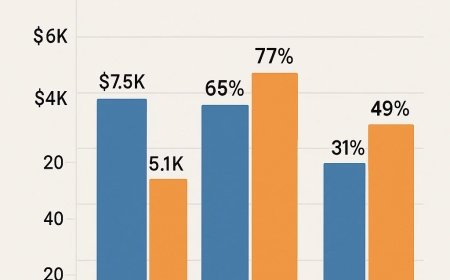Why the Protagonist's Rise Mirrors a Chess Masterstroke
Explore how the protagonist’s strategic rise in the story mirrors a brilliant chess masterstroke—calculated, patient, and powerfully executed.

In literature and film, protagonists often emerge from humble beginnings, weaving a path through hardship and adversity to reach an elevated, often triumphant, status. This narrative arcof a character gradually maneuvering through a world of strategy, betrayal, and opportunitybears a striking resemblance to the elegant complexities of a chess match. Just as a chess master must plan each move with foresight and precision, a well-crafted protagonist must navigate a web of decisions that incrementally shape their destiny. This comparison isnt merely metaphorical; it's structural. The trajectory from obscurity to influence, from vulnerability to command, mirrors the progress of a seemingly insignificant pawn across the boardculminating in transformation.
A compelling example of this parallel is evident in stories grounded in historical upheaval, such as the American Revolution. These tales often feature protagonists who begin as faceless participants in the background of history, only to become critical agents of change. The structure of these narratives is more than just rags-to-riches. It is akin to a strategic endgame where every minor action and sacrifice leads to an ultimate, calculated ascension. This literary architecture doesn't just reinforce the theme of growthit mirrors the core strategic discipline of chess.
Pawn's Journey A Symbol of Transformation
The most intriguing parallel lies in the role of the pawn. In chess, the pawn is the weakest piece, often overlooked due to its limited range and expendability. Yet, paradoxically, it is the only piece with the potential to become anythingqueen, knight, bishop, or rookupon reaching the eighth rank. This slow, deliberate progress from pawn to a powerful figure encapsulates the arc of a classic protagonist.
The same motif surfaces in narrative structures where the hero begins without privilege or status, often trapped in systems far larger than themselves. Think of revolutionaries, outlaws, or underdog soldiers. These characters dont leap into greatness; they inch forward, one deliberate move at a time, learning, adapting, and outmaneuvering enemies much stronger and more established than themselves. Their journey, much like the pawns, is painstakingly slow, often requiring the sacrifice of others for their progress to be meaningful or even possible.
Strategic Vision and Sacrifice
In a chess match, the master's vision isn't about immediate gratification; it's about long-term positioning. Sacrifices are made not because a piece is without value, but because its loss will secure a more valuable gain in the future. In the same way, a protagonists rise frequently involves letting go of relationships, old beliefs, or personal safety to secure a larger goal. These sacrifices underscore the characters evolution and commitment, making their eventual rise feel earned and authentic.
Consider the classic narrative arc of the reluctant hero. Initially unsure of their role or purpose, they are often driven by circumstance or external conflict. Over time, they adopt a broader perspective, much like a chess player who moves from focusing on immediate threats to developing a deep strategy. Each decision is weighed not just for survival, but for progress. Every betrayal, alliance, or risk is a move toward the final confrontationwhether personal, political, or ideological.
Historical Narratives as Chess Matches
When historical events form the backdrop of a story, the chess metaphor becomes even more potent. The American Revolution, for example, is often portrayed not just as a military conflict but as a battle of ideologies and strategies. The rise of leaders like George Washington, the cunning of spies, and the manipulation of alliances reflect a grand game being played on both political and philosophical boards.
In many dramatizations of the Revolution, characters are not born into leadershipthey grow into it. Their rise is marked by small, deliberate steps that mirror the slow advance of a pawn. This transformation from an ordinary citizen into a nation-builder involves both external maneuvering and internal change. It is not brute strength that wins the day, but persistence, adaptability, and vision.
One powerful literary interpretation is exemplified in the metaphorPawn to King's End in depicting the American Revolution, which brilliantly captures this process. The phrase invokes both the literal journey of the chess piece and the symbolic rise of a protagonist through revolutionary tumult. In such narratives, the protagonist embodies the qualities of the pawnunderestimated, endangered, but unwavering. Each step forward is hard-won, each ally gained through trust or shared vision, and each sacrifice accepted as part of the greater good. By the end, the characters transformation is not just personal but emblematic of a broader societal shift.
Manipulation, Deception, and Foresight
Another defining trait of both master-level chess and compelling storytelling is the use of deception and misdirection. In chess, a feint can lure an opponent into a vulnerable position. Similarly, a protagonist may feign weakness or ignorance to gain an upper hand. This intellectual combat adds depth to narratives, especially when protagonists face off against equally cunning antagonists.
The chessboard, much like the narrative world, is a place of shifting dynamics. Allies become threats, threats become opportunities, and the strongest piece on the board may suddenly become irrelevant due to a clever sacrifice or a change in position. This uncertainty mirrors the moral and strategic ambiguity that often defines a great protagonist's journey. Just as a chess master adapts their plan mid-game, so too must a character respond to evolving challenges, making the eventual victory feel all the more deserved.
From Pawn to Legacy
In many stories, the rise of the protagonist doesn't culminate in simple victory, but in legacy. Like a pawn that reaches the end of the board and becomes a queen, the transformation is not just about increased powerit is about potential realized. The character is no longer who they once were; theyve become something more, something greater, forged by struggle and shaped by the intricate dance of choices and consequences.
This is what separates formulaic storytelling from masterful narrative construction. The protagonists rise must feel inevitable not because of destiny, but because of the disciplined, strategic growth that led to it. Each obstacle, each small victory, mirrors a move on the board that brings the player closer to checkmatenot through brute force, but through vision, sacrifice, and will.
Conclusion
The journey of a protagonist who ascends from obscurity to prominence is a narrative as old as storytelling itself, but when crafted with intention, it becomes more than a tale of successit becomes a study in strategy, resilience, and transformation. Just like a masterful chess game, where each move builds toward an ultimate checkmate, a well-written character arc demonstrates how progress is not linear but strategic.
The metaphor of underscores the elegance of this progressionwhere the smallest piece plays the most profound role, and the rise of a single figure can echo the upheaval of an entire era. It is this interplay between individual action and grand design that gives stories their enduring power and emotional depth. Whether on a chessboard or a battlefield, the quiet rise of a pawn remains one of the most compelling stories we can tell.








&srotate=0)

























